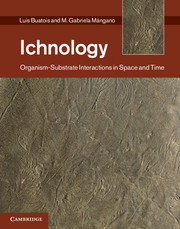2 - Taxonomy of trace fossils
from Part I - Conceptual tools and methods
Published online by Cambridge University Press: 25 October 2011
Summary
In the final analysis, it is the morphology of the trace as an expression of animal behaviour that is the basis of the name.
Richard Bromley Trace Fossils: Biology, Taphonomy and Applications (1996)As ichnologists we must admit that the introduction and discussion of different ichnotaxonomic philosophies reminds us of the inherent subjectivity in any scientific endeavor. Ostensibly the ICZN should constrain such subjective interpretation and bring order to the field. In practice this is difficult, and a certain degree of chaos and ambiguity still reigns. Nonetheless the science progresses, and names, however reliable or controversial, are used for descriptions and dialog between ichnologists.
Martin Lockley “A tale of two ichnologies: the different goal and potential of invertebrate and vertebrate (Tetrapod) ichnotaxonomy and how they relate to ichnofacies analysis” (2007)Although it is not uncommon to find expressions of doubt about the need to use a formal taxonomy to classify trace fossils, ichnotaxonomic classification is an unavoidable companion to preservational and ethological schemes. If a formal name is available, simple descriptors (e.g. vertical burrows and meniscate traces) should be avoided. The ichnotaxonomic classification, albeit imperfect, provides the best common ground on which to base more theoretical elaborations and practical applications (Buatois et al., 2002a). In any case, in modern ichnology contrasting philosophical perspectives have been adopted to classify trace fossils. However, exchange of ideas during and after the 1998, 2002, 2006, and 2010. Workshops on Ichnotaxonomy have resulted in a growing consensus among practicing ichnologists (Bertling et al., 2006). In this chapter, we turn our attention into the theoretical and practical aspects involved in classifying trace fossils from a taxonomic standpoint. We first address some philosophical problems involved in this approach. Then, we focus on a detailed review of the different ichnotaxobases currently in use and the problems associated with compound and composite trace fossils. Subsequent to that, we move on to some recent ideas and proposals with respect to the uses of hierarchies in trace-fossil taxonomy and the peculiarities of vertebrate ichnotaxonomy. Finally, we review some practical aspects involved in the recognition of trace fossils in both outcrops and cores.
- Type
- Chapter
- Information
- IchnologyOrganism-Substrate Interactions in Space and Time, pp. 25 - 37Publisher: Cambridge University PressPrint publication year: 2011
- 1
- Cited by



